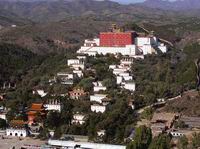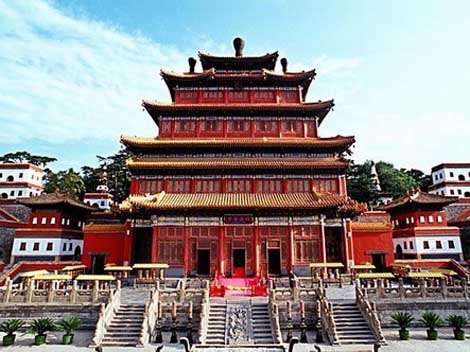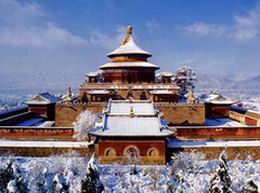Chengde Mountain Resort
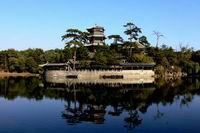
-
City Name:Chengde (Chinese:承德, Pinyin:Chengde)
-
Population :3400,000
-
Area :40,000 square km
-
Overview:Chengde is a famous historical and cultural city in China, located in the northeast of Hebei province, about 220 kilometers from Beijing. It was an imperial resort area in the Qing dynasty (1644-1911).
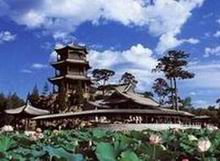 Overview
Overview
Chengde Mountain Resort, also known as Chengde Bishu Shanzhuang, is the largest imperial garden in the world. In 1994, it was listed in the World Cultural Heritage Directory.
Built between 1703 and 1792, the Mountain Resort occupies a total area of 5.6 aquare kilometers, almost half of the Chengde's urban area. It is a vast complex of palaces and administrative and ceremonial buildings.Temples of various architectural styles and imperial gardens blend harmoniously into a landscape of lakes, pastureland and forests. The resort represents its aesthetic beauty as well as a rare historic vestige of the final development of feudal society in China.
Know More
The Qing emperors had established their capital in Beijing by the end of the 17th century, and they began to look around for somewhere cool and green to retreat to when the dusty heat of summer set in. They found what they were looking for at Chengde, beyond the Great Wall. After well constructed of the Resort, the Qing emperors usually handled daily affairs and spent summer here, making it the second political center of Qing Dynasty.
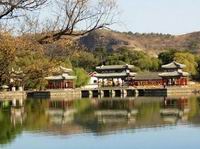 The construction is based on the natural landscape and rustic charm, and the overall layout is made up of the Southeast Lake Zone, Northwest Mountain Zone and the Northeast Grassland, just like a miniature of Chinese territory. The Mountain Resort is divided into four parts: the Palace Area, Lake Area, Plain Area and Mountain Area.
The construction is based on the natural landscape and rustic charm, and the overall layout is made up of the Southeast Lake Zone, Northwest Mountain Zone and the Northeast Grassland, just like a miniature of Chinese territory. The Mountain Resort is divided into four parts: the Palace Area, Lake Area, Plain Area and Mountain Area.
Must See
The Palace Area lies in the south part of the resort, where Emperor Qianlong of the Qing Dynasty would spend half a year annually dealing with important political, military, ethnic and diplomatic affairs. Covering an area of 100,000 sq meters (25 acres), the Palace Area consisted of four main complexes: the Main Palace, the Pine-Crane Hall, the East Palace and the Pine Soughing Valley.
The lake Area lies in north of the Palace Area. Eight islets dotted in the lake, dividing the Lake Area into several fields of different sizes. In total eight lakes in the Lake Area. There are also many scenic spots around this area, which had been modeled after from famous landscaped gardens in Southern China. such as the main building on Green Lotus Island, "Tower of Mist and Rain," imitated a tower in Nanhu Lake at Jiaxing in Zhejiang Province.
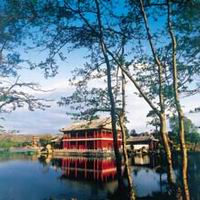
The Plain Area is located at the foot of the mountain. It is a vast area, possessing characteristics of the scenery of the Mongolian grasslands. Forested mountains and valleys are dotted with various buildings, including a 70 meters tall stone Chinese pagoda built in the year 1751 during the reign of the Qianlong Emperor.
The Mountain Area is a silhouette of the plateau of Northeast and Northwest China, occupy 80% of the total area. The mountain area is formed by four valleys: Filbert Valley, Pine Valley, Pear Valley and Pine-cloud Valley, which run south to north. In addition, there are twelve magnificent and brightly-colored temples surrounding the area like a myriad of stars surrounding the moon. These temples are collectively called "Outer Eight Temples", combining the Han, Mongolian, and Tibetan architectural styles. In 1994, Eight Outer Temples together with the Mountain Resort was listed as the World Heritage Site by the UNESCO.

